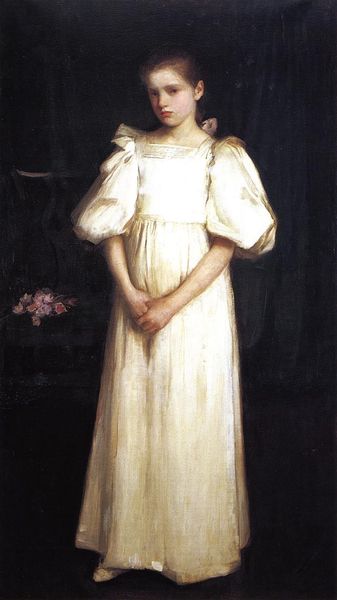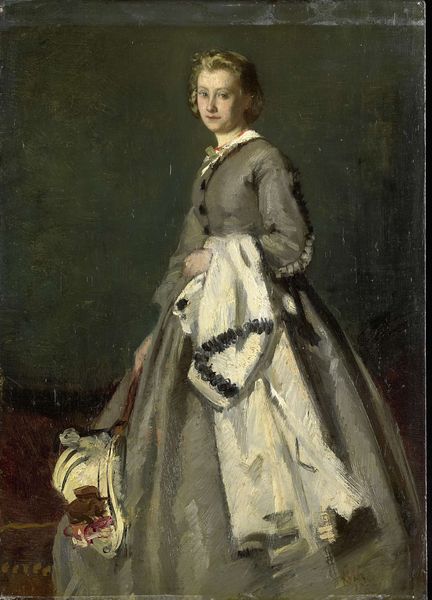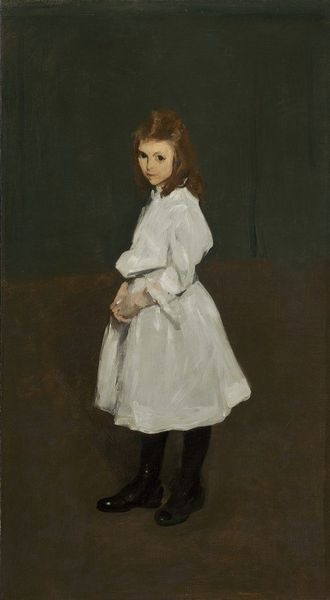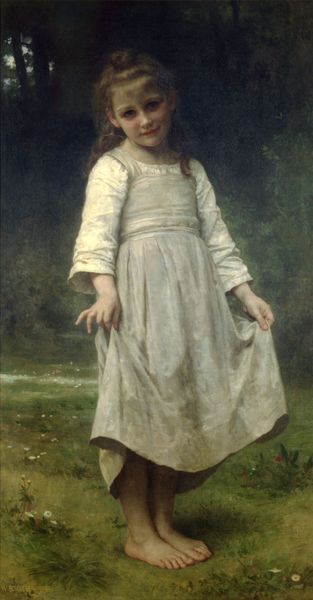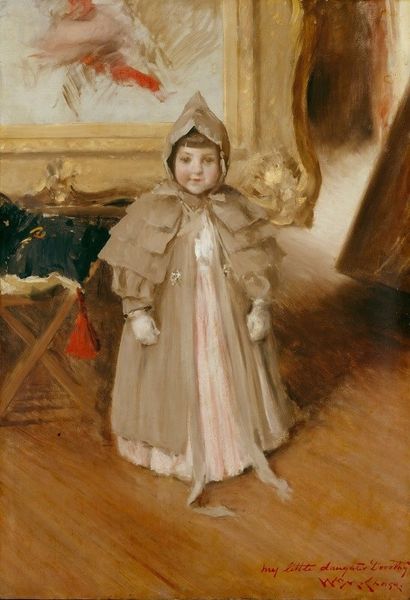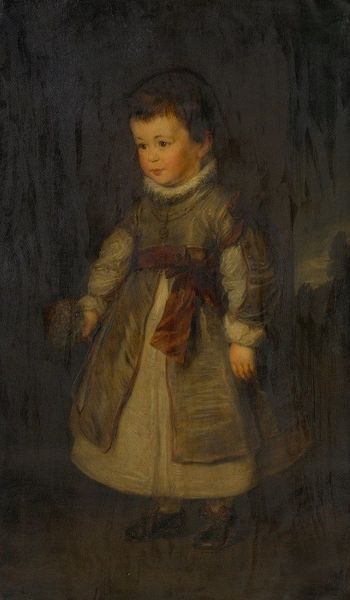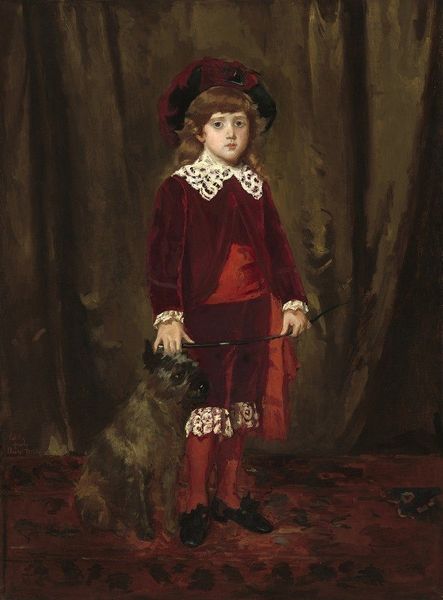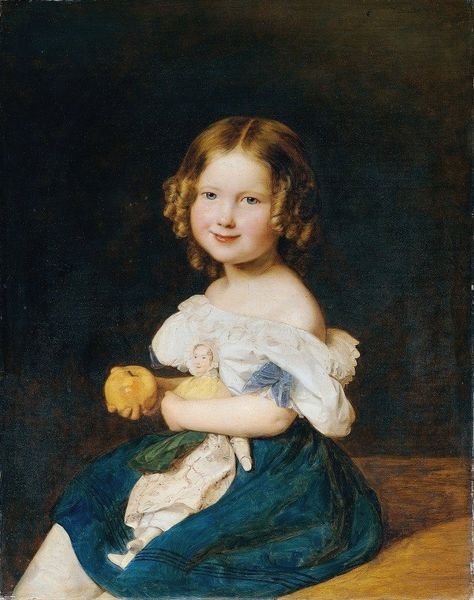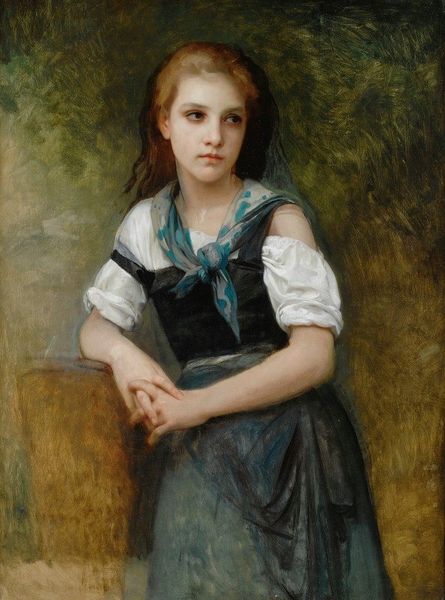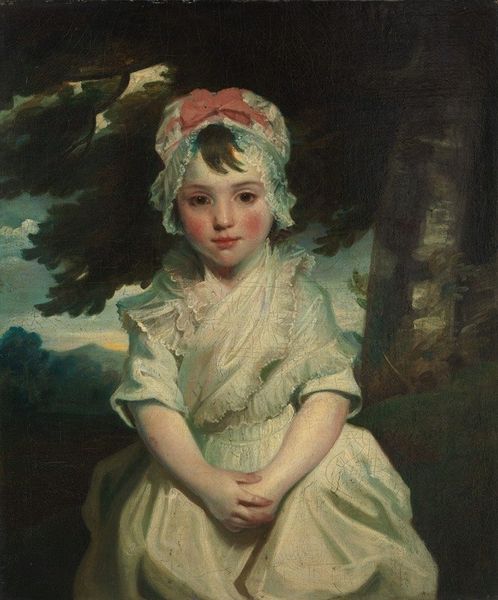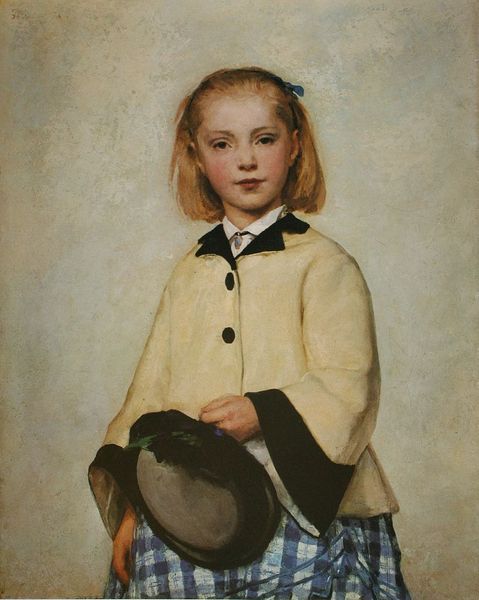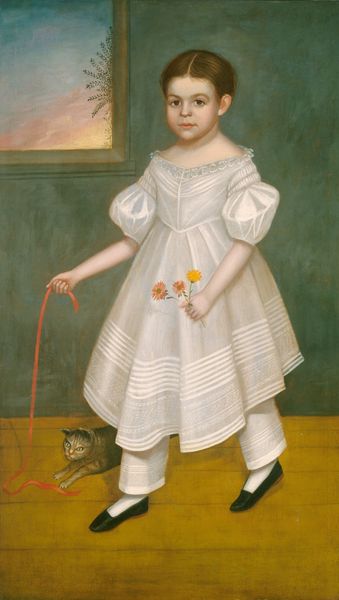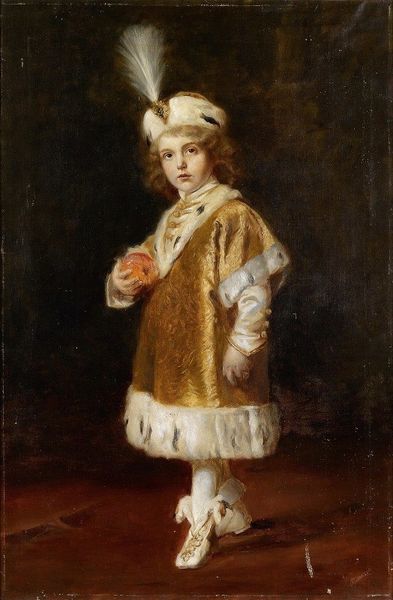
oil-paint
#
portrait
#
figurative
#
oil-paint
#
oil painting
#
romanticism
#
genre-painting
Copyright: Public Domain: Artvee
Editor: This is "Mary Cabot Wheelwright," an oil painting, created by Frank Duveneck. She looks serene, almost ethereal in that light dress, holding her doll. I'm curious to know more about what’s going on here… what do you see? Curator: Well, right away I notice the material contrast. We've got the luxurious oil paint attempting to capture the textures of different textiles – the smooth dress, the doll’s fabric, even those discarded roses. But look closer; is this about representing upper-class finery or subtly critiquing its very production? Editor: Critiquing? How so? Curator: The roses, seemingly discarded, suggest decay or impermanence. Is this painting reflecting upon the short lifespan of objects in a consumerist society, even at this early date? Furthermore, where did those textiles come from, who produced the pigments of the paint? Think of the colonial trade routes necessary for these raw materials. Editor: So, the very materials themselves tell a story? The fabric of her dress, the paint on the canvas – they are products of a system? Curator: Precisely. And Duveneck’s choice to use oil, a medium historically associated with wealth and power, asks us to consider the complex social and economic relationships inherent in artistic production and representation itself. Were are asked not only about the image, but how its making affects its message. Editor: I never considered how the origin of the materials plays such a big role. I will definitely carry these reflections forward in my studies! Curator: Exactly! We can analyze artworks not just for aesthetics, but also for what their materials reveal about the society that created them.
Comments
No comments
Be the first to comment and join the conversation on the ultimate creative platform.
